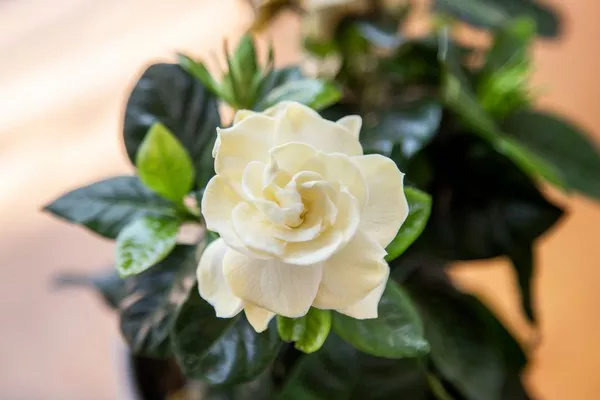The hibiscus, with its vibrant and captivating flowers, has long been a favorite among gardeners and enthusiasts. However, coaxing a hibiscus plant to produce those iconic blooms can sometimes be a challenge. This comprehensive guide aims to unravel the mysteries of getting hibiscus to flower, covering everything from proper care and maintenance to troubleshooting common issues. Dive into the world of hibiscus cultivation and help you achieve a spectacular display of blossoms.
Understanding Hibiscus Varieties
Before embarking on the journey to encourage hibiscus flowering, it’s essential to grasp the diversity of hibiscus varieties and their unique characteristics:
1. Species and Cultivars: There are numerous hibiscus species and cultivars, each with distinct growth habits, flower colors, and preferences. Choose varieties that are well-suited to your climate and preferences.
2. Tropical vs. Hardy: Different hibiscus types exist, including tropical and hardy varieties. Tropical hibiscus is typically grown indoors or in warm climates, while hardy hibiscus can withstand colder temperatures.
3. Flower Types: Hibiscus flowers come in single or double forms, with sizes ranging from a few inches to nearly a foot in diameter. Research the flower types you prefer for your garden.
Providing Optimal Growing Conditions
Creating the right environment for your hibiscus plants is the foundation of successful flowering. Consider these factors when cultivating hibiscus:
1. Sunlight: Hibiscus thrives in full sunlight, requiring at least 6 hours of direct sun daily. Place your plant in a location where it can bask in the sun’s warmth.
2. Temperature: Tropical hibiscus prefers temperatures above 60°F (15°C), while hardy varieties can tolerate cooler conditions. Protect your plants from frost, as it can damage their growth.
3. Soil: Well-draining soil is essential to prevent root rot. A mixture of potting soil, perlite, and organic matter creates an ideal growing medium.
4. Watering: Keep the soil consistently moist, but not waterlogged. Water deeply and allow excess water to drain away. During hot periods, you may need to water more frequently.
Pruning and Maintenance for Blooms
Proper pruning and maintenance play a crucial role in encouraging hibiscus to produce abundant and breathtaking flowers:
1. Pruning Deadwood: Regularly remove dead or diseased branches to stimulate new growth and allocate the plant’s energy to healthy stems.
2. Pinching Tips: To encourage bushiness and more flowering sites, pinch the tips of young shoots. This prompts branching and increases the potential for blooms.
3. Regular Fertilization: Use a balanced, water-soluble fertilizer every 4-6 weeks during the growing season. A higher phosphorus content in the fertilizer promotes flowering.
Troubleshooting and Common Issues
Sometimes, despite your best efforts, hibiscus plants may encounter challenges that hinder flowering. Here are solutions to common issues:
1. Pest Infestations: Aphids, mealybugs, and spider mites are common pests that can sap a hibiscus plant’s energy. Regularly inspect the foliage and treat infestations promptly with insecticidal soap.
2. Yellowing Leaves: Yellow leaves might indicate overwatering, nutrient deficiencies, or poor drainage. Adjust your watering practices and consider using a balanced fertilizer.
3. Bud Drop: If hibiscus buds fall off before opening, stress from sudden temperature changes or insufficient sunlight might be the cause. Shield the plant from extreme conditions and ensure proper sunlight exposure.
Enhancing Flower Production with Advanced Techniques
1. Deadheading: Removing spent flowers prevents seed formation and directs the plant’s energy toward new blooms. This practice encourages prolonged flowering.
2. Hibiscus Grafting: Grafting different hibiscus varieties can lead to unique blooms and better disease resistance. Consult gardening resources for detailed grafting instructions.
Overwintering Hibiscus for Continued Beauty
For regions with cold winters, proper overwintering techniques ensure your hibiscus survives and flourishes in the following growing season:
1. Container Plants: If growing hibiscus in pots, bring them indoors before the first frost. Place them near a sunny window and reduce watering during the dormant period.
2. In-Ground Plants: Hardy hibiscus varieties can be mulched heavily in late fall to protect the roots from freezing temperatures.
Conclusion
Cultivating a hibiscus that bursts into a profusion of blossoms requires attention to detail, proper care, and understanding of the plant’s needs. By providing the right growing conditions, practicing prudent maintenance, and addressing common issues promptly, you can unlock the full potential of your hibiscus plants and enjoy the visual delight of their stunning flowers. From selecting suitable hibiscus varieties to mastering advanced techniques like grafting, this comprehensive guide equips you with the knowledge needed to foster healthy growth and abundant blooms. Embrace the world of hibiscus cultivation and create a vibrant oasis of color in your garden.


